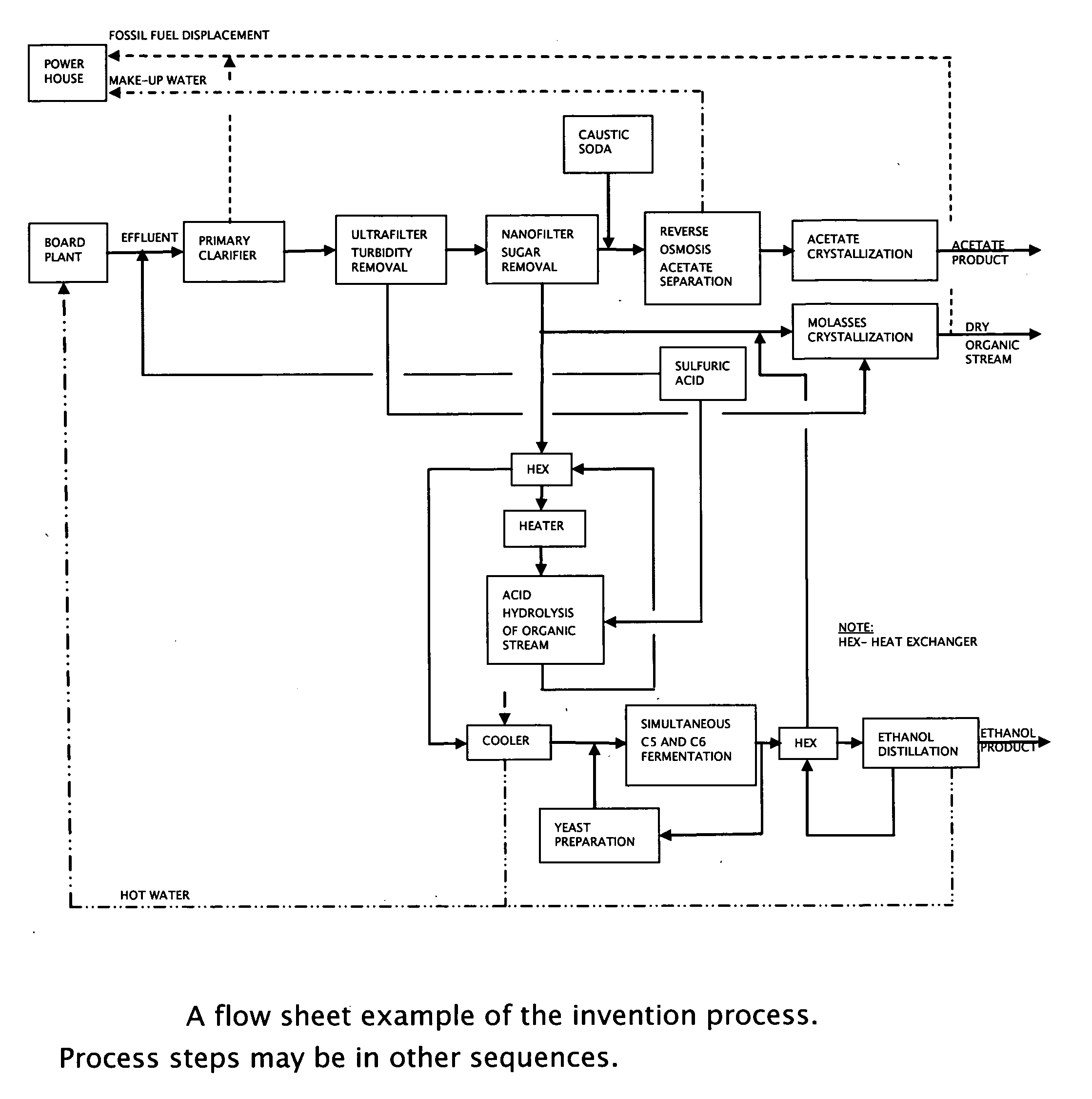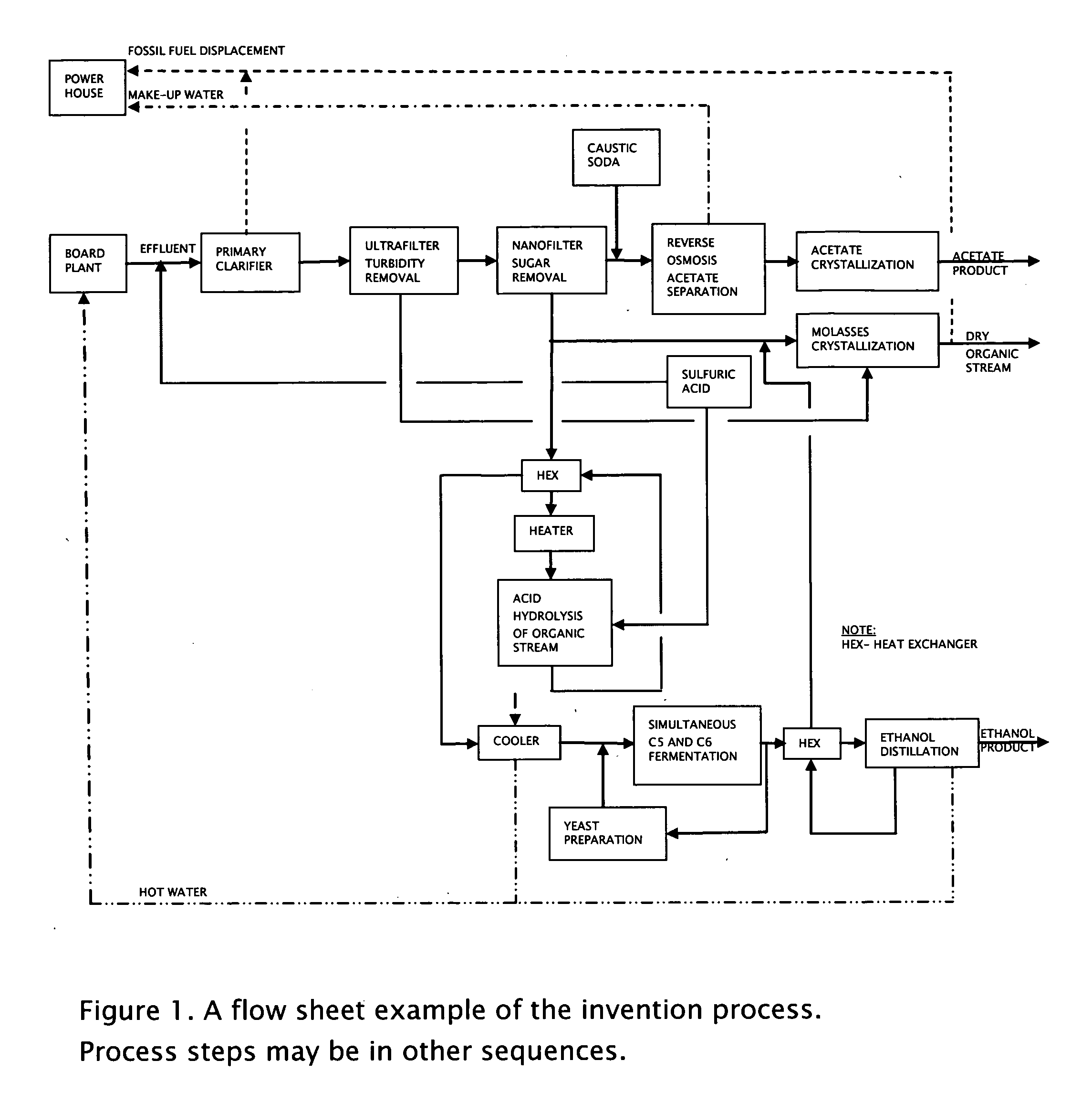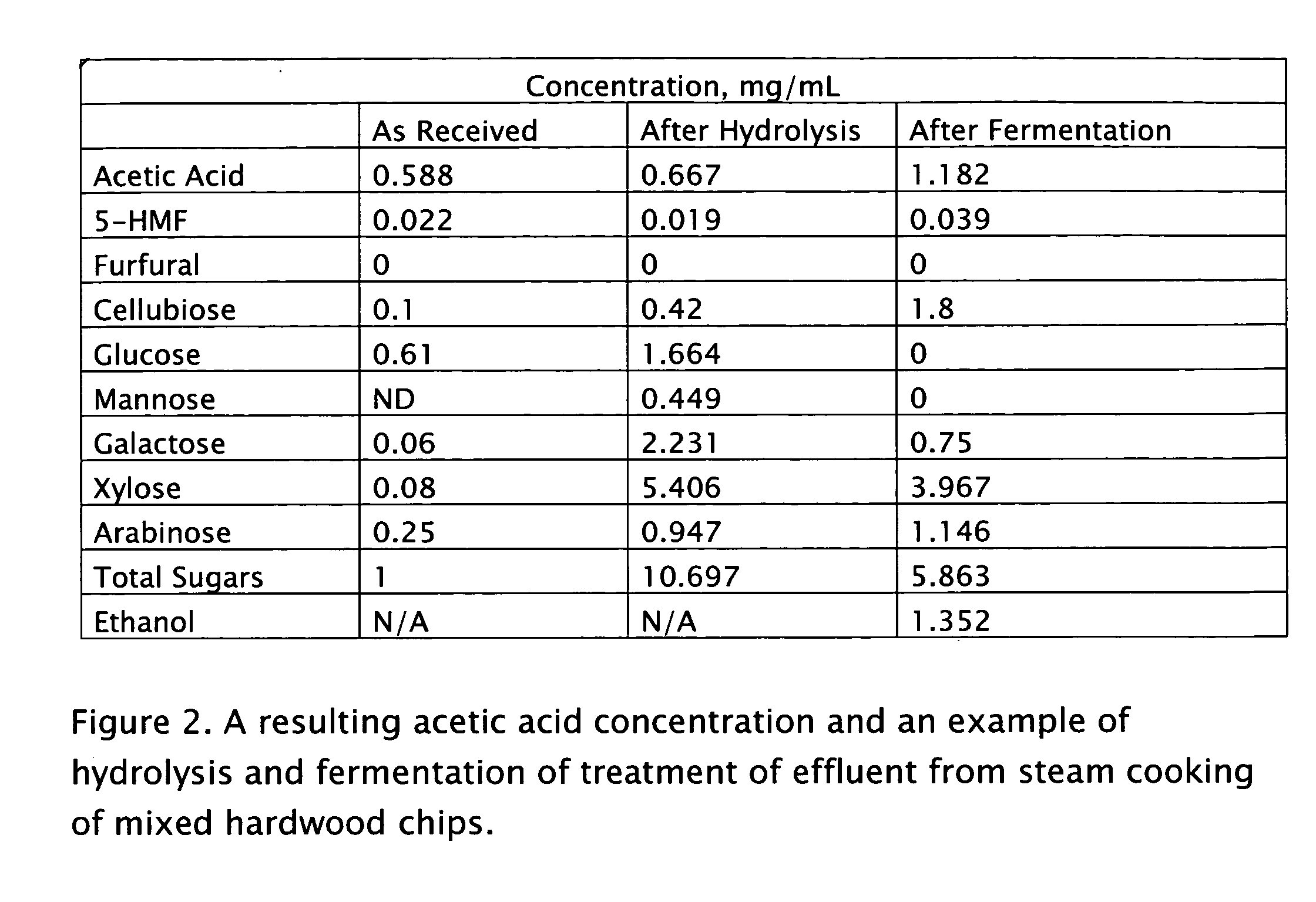Process for obtaining biochemicals in a zero-liquid discharge plant
a biochemical and zero-liquid discharge technology, applied in the field of process, can solve the problems of energy-intensive subsequent concentration of sugars through evaporation before fermentation to produce ethanol, and achieve the effect of eliminating the need for waste water treatment plants and reducing process energy consumption
- Summary
- Abstract
- Description
- Claims
- Application Information
AI Technical Summary
Benefits of technology
Problems solved by technology
Method used
Image
Examples
example 1
[0020]The pH of 125 mL of extract from the steam cooking of hardwood chips was adjusted to 1 by adding 95% sulfuric acid. The extract was then hydrolyzed at 120 degrees C. for 1 hour in an autoclave. The pH of the hydrolyzed liquor was adjusted to 5.6 using ammonium hydroxide (30% ammonia). The liquor was then combined with 3 g peptone and 1.5 g yeast extract nutrients. 15 g of this solution was combined with 3 g yeast and inoculated at 30 degrees C. for 4 hours. The inoculated solution was recombined with the original and fermented at 35 degrees C. for 4 hours. FIG. 2 shows the concentration of acetic acid, ethanol, and other wood derived components for the extract as received, after hydrolysis, and after fermentation.
PUM
| Property | Measurement | Unit |
|---|---|---|
| Acidity | aaaaa | aaaaa |
| Concentration | aaaaa | aaaaa |
| Concentration | aaaaa | aaaaa |
Abstract
Description
Claims
Application Information
 Login to View More
Login to View More - R&D
- Intellectual Property
- Life Sciences
- Materials
- Tech Scout
- Unparalleled Data Quality
- Higher Quality Content
- 60% Fewer Hallucinations
Browse by: Latest US Patents, China's latest patents, Technical Efficacy Thesaurus, Application Domain, Technology Topic, Popular Technical Reports.
© 2025 PatSnap. All rights reserved.Legal|Privacy policy|Modern Slavery Act Transparency Statement|Sitemap|About US| Contact US: help@patsnap.com



